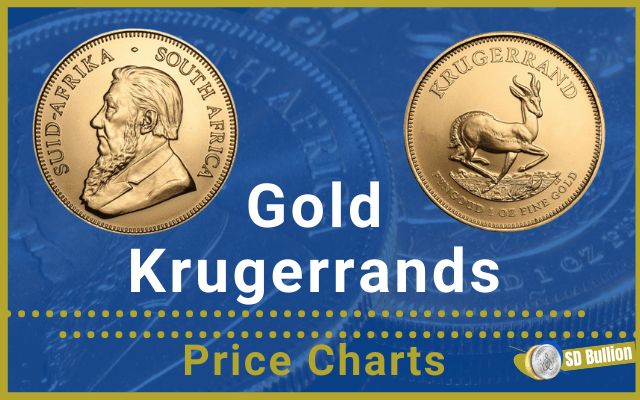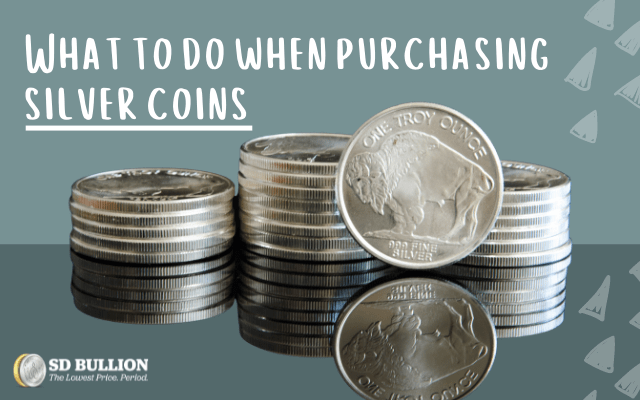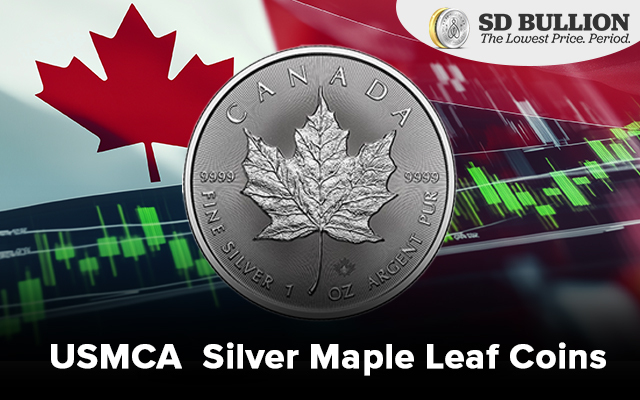Jump to: Krugerrand History | Design | South African Mint | Krugerrands Series | Krugerrand Gold Coins | Proof Krugerrands | The 50th Anniversary Edition | An Oddity | Determining Krugerrand values | South African Gold Krugerrand Price Charts | Why invest in Krugerrands? | FAQs
The Gold Krugerrand is the official South African gold bullion coin. It was the first coin of the sort to promote private ownership of gold as a means of investment.
The name Krugerrand is a combination of Paul Kruger, a prominent political leader and former president of the South African Republic (or the Transvaal Republic), and rand, the South African fiat currency.
This article will cover the history and evolution of the Krugerrand bullion coin program. We also include a comprehensive price guide list for Gold Krugerrand coins, including proof versions and fractional sizes, since the first mintage in 1967.
The Krugerrand History
The first strike of Gold Krugerrand coins happened on July 3, 1967. The South African government aimed to explore the natural abundance of gold ores in the many South African mines and promote private ownership of the precious metal.
In 1980, the Gold Krugerrand coins represented 90% of the gold coins available in the gold bullion market, but, despite the success of its first strikes and the release of the fractional half-ounce, quarter ounce and tenth-ounce counterparts, it faced severe difficulties in reaching investors.
During the 80s, some of the most prominent Western countries imposed economic sanctions against the apartheid policy. Some even prohibited the coin’s imports. The United States government, for instance, did not allow South African Gold Krugerrands but made no restrictions on other foreign coins.
Private investors who saw precious metals as a good investment option did not appreciate the barriers imposed. As soon as the apartheid regime ended, the sanctions were lifted, and Gold Krugerrands became globally available once more.
The Design


The coin features the same national symbols stamped on its first release in 1967. The elements depicted represent the nation’s pride, patriotism, and how valuable freedom is for its people.
While the reverse displays a native animal, the Springbok Antelope, the obverse carries a portrait of Paul Kruger, an essential political personality for the country’s Independence. Hence, “Krugerrand,” which is a compound of “Kruger” and “Rand,” the official currency unit in South Africa.
The Obverse: Paul Kruger
Paul Kruger was the fifth South African President and held the government for nearly two decades. Seen by some as a controversial figure and others as a hero, he devoted his life to being a Boer military and political leader in the late 19th century, representing the nation’s interests against Great Britain, especially during the Second Boer War.
The Krugerrand’s obverse design is an original creation of Otto Schultz, carries the president’s effigy with his long and thick beard and the country’s name in English and Afrikaans: “SOUTH AFRICA” and “SUID-AFRIKA.” In 1984 it underwent some modernization which did not alter the original version.
The Reverse: The Springbok Antelope
The Springbok Antelope is a native animal of South Africa, commonly found in many areas of the territory. It became a national animal, a symbol of homage to its political conquest and natural heritage.
The reverse design showcases the antelope bouncing across the plains, created by Coert Steynberg. The inscriptions encircling the image refer to the coin’s year of mintage, weight, content, fineness, and its name, “KRUGERRAND,” which lies on the upper rim.
The South African Mint
 South African Mint Base of Operations. Source
South African Mint Base of Operations. Source
The history of gold mining in South Africa precedes the foundation of its first official mint, which dates back to 1890 in Pretoria.
Paul Kruger was the president of the South African Republic. He established the first national mint in 1886 to explore the abundant natural sources, produce richness, and meet the internal demand for currency.
The Second Boer War made the South African nation a British colony. The dominant government closed the national mint to make it a British Royal Mint branch facility in 1923 to produce pounds sterling and other British sovereign coins.
Another independence movement arose in the decades that followed. The mint facility closed once more in 1941. It would only reopen under the actual name of South African Mint, which is privately owned.
Today the main facility is in Centurion, Gauteng province, near Pretoria.
The production attends the South African Reserve Bank to produce the national Rand currency for widespread circulation and works in partnership with the Rand Refinery to make the Krugerrand coins.
The Krugerrands Series
Krugerrand Gold Coins
The 1 oz Krugerrand Gold coin measures 32.77 mm in diameter, 2.84 mm thick, and has a gross weight of 33.93 grams.
The fractional sizes of Gold Krugerrands arrived in 1980. The 1/2 oz, the 1/4 oz, and the 1/10 oz coins seemed more popular among investors who could not afford a whole troy-ounce coin or those who appreciated the idea of making Gold Krugerrands a collection by acquiring all the versions.
The standard bullion finish and the original design have accompanied the Krugerrands for over 50 years. Gold remained the only noble metal in the program until 2017, when the Silver Krugerrand was released as part of the 50th anniversary and the first ever silver coin made for silver bullion investors. Krugerrands are also available in proof versions and fractional gold weights.
Proof Krugerrands
Proof Krugerrands differ from regular bullion coins for their mirror-like appearance. While the design imprinted in the South African Krugerrand gets a higher relief, the specific polishment applied to the coin’s background provides a 3-D and shiny luster.
Struck in limited numbers, Proof Krugerrands also differ from their bullion versions because of the number of serrations on the coin’s edges. Bullion coins have 160 serrations and proof ones, 220.
The SA Mint produced fewer proof coins than bullion ones. As their production method demands more detailed work in the production line, proof ones tend to have a higher initial cost. However, the history and the tradition conquered over 50 years brought them some numismatic status, increasing the demand for proof Krugerrand coins.
The 50th Anniversary Edition
The South African Mint celebrated the 50th Anniversary of the Gold Krugerrand in 2017 with an unprecedented edition of the Premium Uncirculated South African Krugerrand.
Gold Krugerrands got a 22k commemorative limited edition. All the Gold modern bullion coins are 91.67% pure gold.
And for the first time, the Mint included two other metal-based products containing 99.9% purity levels: the 1 oz Platinum Krugerrands and the 1 oz Silver Krugerrands.


Both options carry the same features as the gold counterpart, except for the “50” privy seal mark engraved on the reverse side of the commemorative coins.
The anniversary strike accounted for 2.017 1 oz Platinum Krugerrands, 5.000 1 oz Gold Krugerrands, and 1,000,000 1 oz Silver Krugerrands, along with 15.000 Silver Proof Krugerrands.
An Oddity
Krugerrands' production line has followed a specific pattern since its first release. The design, coin sizes, dimensions, and content remain the same except for one strike.
The 2011 edition had a single episode of underweight in a Gold Proof Krugerrand. A small but uncertain number of 2011 Gold Proof Krugerrands were produced with the correct overall weight but with less gold content than they should have had. The SA Mint attributed this failure to unspecified issues that changed the amount of metal percentages in the planchet during the production process.
Unlikely but possible, this kind of oddity may influence prices and collectors' demand.
How to determine Krugerrand value
Krugerrands are made of precious metals in Bullion, Proof, or Premium Versions.
The kind of finish applied to embellish the surfaces have some influence over the product price, as well as the condition they may have in a graded evaluation, rarity, and collectibility.
But the determining factor of a coin's value is its metal content. Institutions like the LBMA - London Bullion Market Association, announce the price of precious metals to the global market daily. The gold spot price and the silver spot price are base values for every silver and gold bullion product, but precious metals dealers add a premium before selling it at retail. The premium is either a fixed value or a percentage over the spot price.
Spot prices rise and fall several times during a typical business day. The relation between the industrial demand and the supplies mined, the number of transactions made with certain metals, and mass liquidation periods may directly affect the spot price.
As Krugerrands are made of highly concentrated precious metals, each oz is worth at least its weight in bullion.
Unlike other sovereign coins, Gold Krugerrands do not bear face value, but the Republic of South Africa guarantees their legal tender status based on the gold spot price of the day. On the other hand, the Silver Krugerrand has a face value of 1 rand.
South African Gold Krugerrand Price Charts
Below, you will find a price chart for Gold Krugerrands, including the 1 Troy oz version, fractional sizes, and proof coins. All information is an extract from NGC Coin Explorer. Please note complete mintage information from the Rand Refinery and South African Mint are not currently available beyond 2013.
Denomination: Krugerrand
|
Mint Year |
Mintage |
Price for MS68 |
|
1967 |
40,000 |
$2,500.00 |
|
1967 Proof |
10,000 |
$4,500.00 |
|
1968 |
20,000 |
$2,500.00 |
|
1968 Proof frosted bust and frosted reverse |
1,044 |
1669.32* |
|
1968 Proof |
8,956 |
1669.32* |
|
1969 |
20,000 |
$2,500.00 |
|
1969 Proof |
10,000 |
1669.32* |
|
1970 |
211,018 |
$2,500.00 |
|
1970 Proof |
10,000 |
1669.32* |
|
1971 |
550,200 |
$2,500.00 |
|
1971 Proof |
6,000 |
1669.32* |
|
1972 |
553,700 |
$2,500.00 |
|
1972 Proof |
6,625 |
1669.32* |
|
1973 |
859,300 |
$2,500.00 |
|
1973 Proof |
10,000 |
1669.32* |
|
1974 |
3,203,000 |
$2,500.00 |
|
1974 Proof |
6,325 |
1669.32* |
|
1975 |
4,803,925 |
1669.32* |
|
1975 Proof |
5,600 |
1669.32* |
|
1976 |
3,004,945 |
1669.32* |
|
1976 Proof |
6,600 |
1669.32* |
|
1977 188 serrations on the edge |
3,331,344 |
1669.32* |
|
1977 220 serrations on the edge |
1669.32* |
|
|
1977 Proof 188 serrations on the edge |
8,500 |
1669.32* |
|
1977 Proof 220 serrations on the edge |
1669.32* |
|
|
1978 |
6,012,293 |
1669.32* |
|
1978 Proof |
10,000 |
1669.32* |
|
1979 |
4,940,755 |
1669.32* |
|
1979 Proof |
11,800 |
1669.32* |
|
1980 |
3,049,396 |
1669.32* |
|
1980 Proof |
12,000 |
1669.32* |
|
1981 |
3,185,827 |
1669.32* |
|
1981 Proof |
12,900 |
1669.32* |
|
1982 |
2,668,506 |
1669.32* |
|
1982 Proof |
16,960 |
1669.32* |
|
1983 |
3,349,061 |
1669.32* |
|
1983 Proof |
19,100 |
1669.32* |
|
1984 |
2,055,689 |
1669.32* |
|
1984 Proof |
14,00 |
1669.32* |
|
1985 |
864,995 |
1669.32* |
|
1985 Proof |
10,224 |
1669.32* |
|
1986 Proof |
21,040 |
1669.32* |
|
1987 |
19,798 |
1669.32* |
|
1987 GRC Proof |
1,160 |
1669.32* |
|
1987 Proof |
10,196 |
1669.32* |
|
1988 |
614,673 |
1669.32* |
|
1988 GRC Proof |
1,220 |
1669.32* |
|
1988 Proof |
3,854 |
1669.32* |
|
1989 |
194,319 |
1669.32* |
|
1989 GRC Proof |
987 |
1669.32* |
|
1989 Proof |
4,083 |
1669.32* |
|
1990 |
391,393 |
1669.32* |
|
1990 GRC Proof |
1,066 |
1669.32* |
|
1990 Proof |
1,966 |
1669.32* |
|
1991 |
283,184 |
1669.32* |
|
1991 GRC Proof |
426 |
1669.32* |
|
1991 Proof |
1,755 |
1669.32* |
|
1992 |
1,803 |
1669.32* |
|
1992 Proof |
2,067 |
1669.32* |
|
1993 |
162,340 |
1669.32* |
|
1993 Proof |
3,963 |
1669.32* |
|
1994 |
129,530 |
1669.32* |
|
1994 Proof |
1,761 |
1669.32* |
|
1995 |
58,630 |
1669.32* |
|
1995 Proof |
1,678 |
1669.32* |
|
1996 |
9,874 |
1669.32* |
|
1996 Proof |
2,188 |
1669.32* |
|
1997 Proof 30th Anniversary of Krugerrand privy mark |
30 |
2250 |
|
1997 Proof |
1,663 |
1669.32* |
|
1997 SS Proof |
72 |
10,000,000 |
|
1998 |
7,097 |
1669.32* |
|
1998 Proof |
1,179 |
1669.32* |
|
1999 |
17,051 |
1669.32* |
|
1999 Proof |
2,787 |
1669.32* |
|
2000 |
34,850 |
1669.32* |
|
2000 Proof |
3,143 |
1669.32* |
|
2001 |
5,889 |
1669.32* |
|
2001 Proof |
5,563 |
1669.32* |
|
2002 |
16,469 |
1669.32* |
|
2002 Proof |
3,531 |
1669.32* |
|
2003 |
47,789 |
1669.32* |
|
2003 Proof |
2,136 |
1669.32* |
|
2004 |
71,269 |
1669.32* |
|
2004 Proof |
3,492 |
1669.32* |
|
2004 W/MM Proof |
500 |
1669.32* |
|
2005 |
3,400 |
1669.32* |
|
2005 Proof |
1669.32* |
|
|
2006 |
3,300 |
1669.32* |
|
2006 Proof |
1669.32* |
|
|
2007 |
2,500 |
1669.32* |
|
2007 Proof |
1669.32* |
|
|
2008 |
2,500 |
1669.32* |
|
2008 Proof |
1669.32* |
|
|
2009 |
1669.32* |
|
|
2009 Proof |
1669.32* |
|
|
2010 |
1669.32* |
|
|
2010 Proof |
1669.32* |
|
|
2011 |
1669.32* |
|
|
2011 Proof |
1669.32* |
|
|
2012 |
1669.32* |
|
|
2012 Proof |
1669.32* |
*Melt Value - may vary
Denomination: 1/2 Krugerrand
|
Mint Year |
Mintage |
Price for MS68 |
|
1980 |
374,313 |
$850.00 |
|
1980 Proof |
60 |
$3,500.00 |
|
1981 |
169,014 |
$850.00 |
|
1981 Proof |
9,000 |
834,74* |
|
1982 |
416,390 |
$850.00 |
|
1982 Proof |
13,000 |
834.74* |
|
1983 |
46,805 |
$850.00 |
|
1983 Proof |
13,600 |
834.74* |
|
1984 |
176,760 |
$850.00 |
|
1984 Proof |
9,900 |
834.74* |
|
1985 |
97,689 |
$850.00 |
|
1985 Proof |
5,945 |
834.74* |
|
1986 Proof |
8,002 |
834.74* |
|
1987 GRC Proof |
1,186 |
$900.00 |
|
1987 Proof |
4,203 |
834.74* |
|
1988 |
5,454 |
$850.00 |
|
1988 GRC Proof |
1,026 |
$900.00 |
|
1988 Proof |
2,062 |
834.74* |
|
1989 |
4,980 |
$850.00 |
|
1989 GRC Proof |
399 |
$1,000.00 |
|
1989 Proof |
3,328 |
834.74* |
|
1990 GRC Proof |
1,066 |
$900.00 |
|
1990 Proof |
1,784 |
834.74* |
|
1991 GRC Proof |
426 |
$1,000.00 |
|
1991 Proof |
3,033 |
834.74* |
|
1992 Proof |
1,501 |
834.74* |
|
1993 |
10,800 |
$850.00 |
|
1993 Proof |
2,439 |
834.74* |
|
1994 |
15,910 |
$850.00 |
|
1994 Proof |
2,146 |
834.74* |
|
1995 |
10,417 |
$850.00 |
|
1995 Proof |
1,012 |
834.74* |
|
1996 |
3,311 |
$850.00 |
|
1996 Proof |
1,788 |
834.74* |
|
1997 |
10,598 |
$850.00 |
|
1997 Proof |
2,030 |
834.74* |
|
1997 Proof 30th Anniversary of Krugerrand privy mark |
30 |
$1,250.00 |
|
1998 Proof |
1,303 |
834.74* |
|
1999 |
23,917 |
$850.00 |
|
1999 Proof |
1,924 |
834.74* |
|
2000 |
23,851 |
834.74* |
|
2000 Proof |
3,453 |
834.74* |
|
2001 |
6,429 |
834.74* |
|
2001 Proof |
3,696 |
834.74* |
|
2002 |
834.74* |
|
|
2002 Proof |
2,295 |
834.74* |
|
2003 |
11,588 |
834.74* |
|
2003 Proof |
1,285 |
834.74* |
|
2004 |
834.74* |
|
|
2004 Proof |
3,288 |
834.74* |
|
2005 |
834.74* |
|
|
2005 Proof |
834.74* |
|
|
2006 |
834.74* |
|
|
2006 Proof |
834.74* |
|
|
2007 |
834.74* |
|
|
2007 Proof |
3,400 |
834.74* |
|
2008 |
834.74* |
|
|
2008 Proof |
3,300 |
834.74* |
|
2009 |
834.74* |
|
|
2009 Proof |
2,500 |
834.74* |
|
2010 |
834.74* |
|
|
2010 Proof |
2,500 |
834.74* |
|
2011 |
834.74* |
|
|
2011 Proof |
834.74* |
|
|
2012 |
834.74* |
|
|
2012 Proof |
834.74* |
*Melt Value - may vary
Denomination: 1/4 Krugerrand
|
Mint Year |
Mintage |
Price for MS68 |
|
1980 |
533,818 |
$475.00 |
|
1980 Proof |
60 |
$3,000.00 |
|
1981 |
718,928 |
$475.00 |
|
1981 Proof |
7,500 |
$700.00 |
|
1982 |
1,259,898 |
$475.00 |
|
1982 Proof |
11,270 |
$700.00 |
|
1983 |
51,612 |
$475.00 |
|
1983 Proof |
12,075 |
$700.00 |
|
1984 |
489,351 |
$475.00 |
|
1984 Proof |
13,020 |
$700.00 |
|
1985 |
587,193 |
$475.00 |
|
1985 Proof |
6,700 |
$700.00 |
|
1986 Proof |
8,613 |
$700.00 |
|
1987 GRC Proof |
1,121 |
$800.00 |
|
1987 Proof |
4,929 |
$700.00 |
|
1988 |
5,946 |
$475.00 |
|
1988 GRC Proof |
835 |
$800.00 |
|
1988 Proof |
2,027 |
$700.00 |
|
1989 |
5,943 |
$475.00 |
|
1989 GRC Proof |
318 |
$900.00 |
|
1989 Proof |
2,998 |
$700.00 |
|
1990 GRC Proof |
1,066 |
$800.00 |
|
1990 Proof |
1,084 |
$700.00 |
|
1991 GRC Proof |
426 |
$900.00 |
|
1991 Proof |
1,200 |
$700.00 |
|
1992 Proof |
1,629 |
$700.00 |
|
1993 Proof |
3,061 |
$700.00 |
|
1994 |
38,747 |
$475.00 |
|
1994 Proof |
1,874 |
$700.00 |
|
1995 |
12,865 |
$475.00 |
|
1995 Proof |
1,095 |
$700.00 |
|
1996 Proof |
1,853 |
$700.00 |
|
1997 Proof |
1,440 |
$700.00 |
|
1997 Proof 30th Anniversary of Krugerrand privy mark |
30 |
$1,000.00 |
|
1998 |
3,937 |
$475.00 |
|
1998 Proof |
1,701 |
$700.00 |
|
1999 |
34,844 |
$475.00 |
|
1999 Proof |
1,990 |
$700.00 |
|
2000 |
30,282 |
$475.00 |
|
2000 Proof |
3,600 |
$425.00 |
|
2001 |
10,607 |
$475.00 |
|
2001 Proof |
3,841 |
$425.00 |
|
2002 |
10,558 |
$475.00 |
|
2002 Proof |
2,442 |
$425.00 |
|
2003 |
11,468 |
$475.00 |
|
2003 Proof |
2,450 |
$425.00 |
|
2004 |
$475.00 |
|
|
2004 Proof |
4,570 |
$425.00 |
|
2005 |
$475.00 |
|
|
2005 Proof |
$425.00 |
|
|
2006 |
$475.00 |
|
|
2006 Proof |
$425.00 |
|
|
2007 |
$475.00 |
|
|
2007 Proof |
4,400 |
$425.00 |
|
2008 |
$475.00 |
|
|
2008 Proof |
4,800 |
$425.00 |
|
2009 |
$475.00 |
|
|
2009 Proof |
6,000 |
$425.00 |
|
2010 |
$475.00 |
|
|
2010 Proof |
6,000 |
$425.00 |
|
2011 |
$475.00 |
|
|
2011 Proof |
$425.00 |
|
|
2012 |
$475.00 |
|
|
2012 Proof |
$425.00 |
Denomination: 1/10 Krugerrand
|
Mint Year |
Mintage |
Price for MS68 |
|
1980 |
856,915 |
$300.00 |
|
1980 Proof |
60 |
$2,250.00 |
|
1981 |
1,313,522 |
$300.00 |
|
1981 Proof |
7,500 |
$225.00 |
|
1982 |
1,053,539 |
$300.00 |
|
1982 Proof |
11,270 |
$225.00 |
|
1983 |
495,445 |
$300.00 |
|
1983 Proof |
12,075 |
$225.00 |
|
1984 |
885,250 |
$300.00 |
|
1984 Proof |
13,020 |
$225.00 |
|
1985 |
275,548 |
$350.00 |
|
1985 Proof |
6,700 |
$250.00 |
|
1986 |
87,00 |
$350.00 |
|
1986 Proof |
8,612 |
$250.00 |
|
1987 |
53,400 |
$350.00 |
|
1987 GRC Proof |
1,126 |
$375.00 |
|
1987 Proof |
4,939 |
$250.00 |
|
1988 |
87,433 |
$350.00 |
|
1988 GRC Proof |
949 |
$375.00 |
|
1988 Proof |
1,913 |
$250.00 |
|
1989 |
$300.00 |
|
|
1989 GRC Proof |
377 |
$750.00 |
|
1989 Proof |
2,939 |
$225.00 |
|
1990 |
9,500 |
$300.00 |
|
1990 GRC Proof |
1,096 |
$350.00 |
|
1990 Proof |
2,363 |
$225.00 |
|
1991 |
82,273 |
$300.00 |
|
1991 GRC Proof |
426 |
$600.00 |
|
1991 Proof |
3,098 |
$225.00 |
|
1992 Proof |
1,789 |
$225.00 |
|
1993 |
53,535 |
$300.00 |
|
1993 Proof |
3,811 |
$225.00 |
|
1994 |
85,753 |
$300.00 |
|
1994 Proof |
2,215 |
$225.00 |
|
1995 |
24,788 |
$300.00 |
|
1995 Proof |
1,612 |
$225.00 |
|
1996 |
8,945 |
$300.00 |
|
1996 Proof |
2,891 |
$225.00 |
|
1997 |
19,496 |
$300.00 |
|
1997 30th Anniversary of Krugerrand privy mark |
30 |
$300.00 |
|
1997 Proof |
2,440 |
$225.00 |
|
1998 |
15,452 |
$300.00 |
|
1998 Proof |
1,799 |
$225.00 |
|
1999 |
28,643 |
$300.00 |
|
1999 Proof |
$225.00 |
|
|
2000 |
64,759 |
$300.00 |
|
2000 Proof |
4,603 |
$225.00 |
|
2001 |
17,936 |
$300.00 |
|
2001 Proof |
4,058 |
$225.00 |
|
2002 |
12,890 |
$300.00 |
|
2002 Proof |
3,110 |
$225.00 |
|
2003 |
15,893 |
$300.00 |
|
2003 Proof |
1,893 |
$225.00 |
|
2004 |
$300.00 |
|
|
2004 Proof |
3,811 |
$225.00 |
|
2005 |
$300.00 |
|
|
2005 Proof |
$225.00 |
|
|
2006 |
$300.00 |
|
|
2006 Proof |
$225.00 |
|
|
2007 |
$300.00 |
|
|
2007 Proof |
4,400 |
$225.00 |
|
2008 |
$300.00 |
|
|
2008 Proof |
4,800 |
$225.00 |
|
2009 |
$300.00 |
|
|
2009 Proof |
6,000 |
$225.00 |
|
2010 |
$300.00 |
|
|
2010 Proof |
6,000 |
$225.00 |
|
2011 |
$300.00 |
|
|
2011 Proof |
$225.00 |
|
|
2012 |
$300.00 |
|
|
2012 Proof |
$225.00 |
Advantages and Disadvantages of Krugerrands
The acquisition of physical bullion may be a sensible option for investment funds in a diversified portfolio. Bullion tends to remain less prone to devaluation in times of market turmoil than commodities that depend on fiat currency variations. And due to its intrinsic nature, it tends to keep its value over the years, which may be an exciting way to preserve wealth in the long run.
The South African Mint has been producing uncountable Krugerrands for over 50 years, making them readily available in the market and potentially negotiable.
The long journey and the difficulties faced brought international renown to the SA Mint, and therefore, the Krugerrands became one of the most recognized gold coins worldwide.
Each Krugerrand is composed of the finest precious metals minted in South Africa, one of the most crucial international suppliers.
As Gold Krugerrand coins are 22k gold, their composition contains 91.67% pure gold alloyed with another metal, like nickel or copper, to make them a more rigid and more durable piece.
Unlike Silver Krugerrands, Gold Krugerrands do not bear face value. However, all Krugerrands are legal tender and are fully backed by the South African Government.
All these facts make Krugerrands a valuable asset for private investors who want to invest in gold or silver through a coin collection.
Frequently Asked Questions About Krugerrand Coins
What is a Krugerrand?
Krugerrand was the first 1 oz gold coin minted in the world. Produced for the first time in 1967 in South Africa, they arrived in the market as a private investment. Currently made in gold, silver, and platinum with a high concentration of metal content in each version, in varied sizes, including fractions, they have legal tender status guaranteed by the Republic of South Africa.
How much is a Krugerrand worth?
Bullion value usually depends on their metal content and weight. Troy ounce (oz) is the unit of measurement commonly used to weigh bullion coins, and the precious metal's spot price determines how much one troy ounce is worth. For instance, a 1 oz Gold Krugerrand is worth at least 1 oz or approximately 31,1 grams of gold.
What impacts the valuation of Krugerrands?
Some factors influence the assessment of a particular coin to establish its value. Some are condition, weight, collectibility, rarity, and metal content. Since coins are initially valued because of their nature as precious metals, a drastic variation in the metals’ spot price, which is not often, may affect a coin’s value.
Is Krugerrand Gold a Good or Safe Investment?
Maintaining some physical bullion in a diversified investment portfolio may be an exciting input option because bullion tends to suffer less in market fluctuations and retains its value over time. Gold Krugerrands are composed of .999 pure gold, a considerable level of gold content. If investors are not confident investing in heavier coins, the Series offers fractional sizes that allow initial lower inputs.
Which year Krugerrand is the most valuable?
1967 1 oz Gold Krugerrand may be the most valuable coin of the series because of its year of mintage. The South African Mint debuted the Krugerrand Collection with the standard 1 oz Gold Krugerrand. It was the first one-troy-ounce gold bullion coin available in the market for private gold investment. During the apartheid policy, Western countries prohibited Gold Krugerrands imports making these initial strikes a highly collectible item.
How do I sell my gold Krugerrand coin?
Online advertisements can sell anything, but it is advisable to talk to someone who understands coins, make a proper analysis based on recognized graded systems, like the NGC, and who can offer fair prices for your Krugerrands. Despite not having face value, Krugerrands have high concentrations of metal composition and, according to their condition, it may be worth at least their weight in melt value.
Do Krugerrands increase in value?
Bullion tends to preserve their value over time because of their nature as a precious metal. Spot prices vary a lot during a typical business day, but not a drastic variation to increase or decrease prices radically. Krugerrands are one of the oldest coins available in the bullion market, and therefore, their value may increase because of their semi-numismatic nature.
How much gold is in a Krugerrand?
Gold Krugerrands are 22k, which means the gold used to produce Krugerrands are 91.67% pure. The rest of the composition is copper, which makes the coin more rigid and durable. Gold Krugerrands series comprises 1 oz, ½ oz, ¼ oz, and 1/10 oz gold coins. These numbers represent the amount of gold weight, and the copper adds to that weight.















